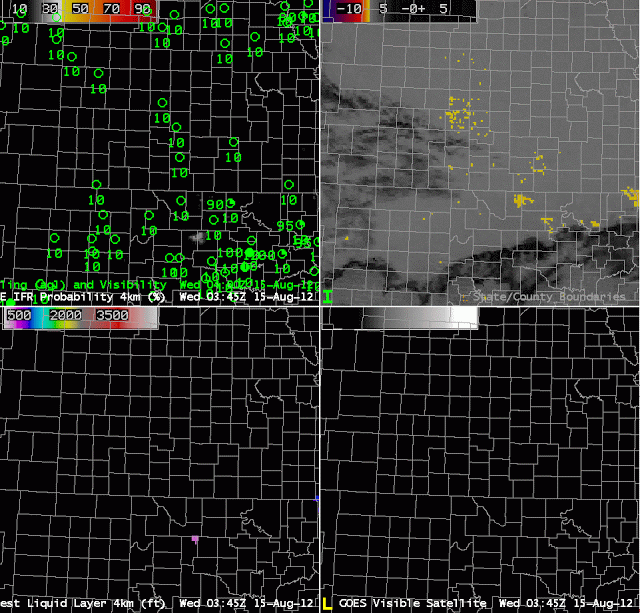Radiation fog that developed over Kansas early in the morning of August 15th highlights the strengths of the GOES-R IFR algorithm. IFR probabilities are highest in regions where the satellite signal — the brightness temperature difference — is strong; IFR probabilities are reduced in regions where the model signal is not strong. Thus, IFR probabilities are generally highest in regions where IFR conditions are observed. In the loop above, high IFR probabilities do not extend into central Kansas where a satellite signal does exist. In addition, the GOES-R IFR imagery at 0502 UTC does not include the sudden expansion in areal coverage (likely due to stray light) that appears only at that time. The IFR Probability signal persists through sunrise (in contrast to the Brightness Temperature Difference signal that flips sign as the sun comes up). GOES-R Cloud thickness peaks around 1200 feet at the last image before twilight; according to this chart, that suggests that the radiation fog will burn off more than 4 hours after sunrise. The last fog did not dissipate until shortly after 1600 UTC.
Radiation Fog over Kansas
Leave a reply

